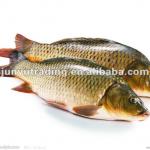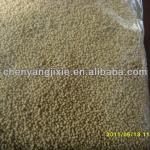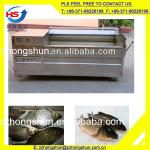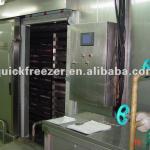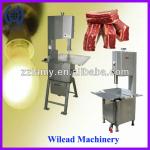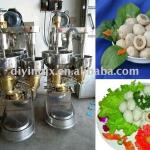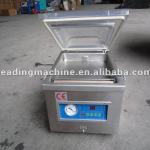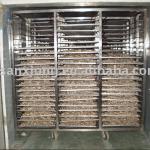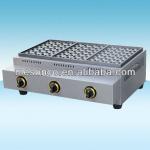PK-HL-R9 electrical s.steel food processing wiht cutter
| Place of Origin:Anhui China (Mainland) | Brand Name:ProKit | Model Number:PK-HL-R9 | Application:Hotel, Restaurant, Butcher shop, Salad making |
| Function:High speed cutter for meat, vegetable, oil or mixed recipe | Material:S.steel | Color:Silver | Certification:CE, RoHS |
| GW/NW:26/23 kg | Packing:480x330x400mm | Bowl volume:9 liters | Food contain:6 liters |
| Protection:Auto-stop when cover off | Type:food processor |
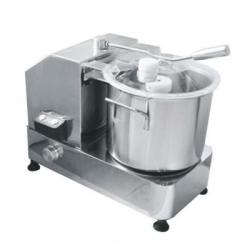
A matter about meat ball making
A meatball is made from an amount of ground meat rolled into a small ball, sometimes along with other ingredients, such as breadcrumbs, minced onion, spices, and possibly eggs. Meatballs are usually prepared and rolled by hand, and are cooked by frying, baking, steaming, or braising in sauce.
There are many kinds of meatball recipes using different types of meats and spices, including vegetarian and fish alternatives, and various methods of preparation.
The ancient Roman cookbook Apicius included many meatball-type recipes.From the Balkans to India, there is a large variety of meatballs in the kofta family.
Meatballs across various cultures
In Belgium, meatballs are called ballekes or bouletten in Flanders, and are usually made of a mixture of beef and pork with breadcrumbs and sliced onions. Many other variations exist, including different kinds of meat and chopped vegetables.
In Bulgaria meatballs are called kyufte and are typically made from ground beef or pork, or a mix of the two. They can be shallow fried or grilled and often contain diced onions and soaked bread. They are a very popular dish.
Chinese meatballs (specifically, a dish common in Shanghai cuisine) are most often made of pork and are usually steamed or boiled, either as-is, or with the addition of soy sauce. Large meatballs, called lion's heads, can range in size from about 5 cm to 10 cm in diameter. Smaller varieties, called pork balls, are used in soups. A Cantonese variant, the steamed meatball, is made of beef and served as a dim sum dish. A similar dish is called the beef ball, and the fish ball is yet another variety made from pulverized fish. In northern China, irregular balls made from minced meat and flour are often deep-fried and eaten for special occasions.
In the Netherlands, meatballs are called gehaktbal, and are often served with boiled potatoes and vegetables. This combination has been the most common dish in Dutch households for many years.
In Norway, meatballs are called kjøttkaker ("meat cakes") and resemble Danish frikadeller, but they are usually made from ground beef. This dish is traditionally served with boiled potatoes, gravy, lingonberry jam and/or stewed green peas. Some people also like to add fried/caramelized onion on the side.
In the United Kingdom, faggots are a type of spicy pork meatball. A faggot is traditionally made from pig heart, liver and fatty belly meat or bacon minced together, with herbs added for flavouring, and sometimes breadcrumbs.
In the United States, meatballs are commonly served with spaghetti as in spaghetti and meatballs, a dish in Italian American cuisine, assimilated from Italian immigrants coming from southern Italy in the early 19th century. Over time, the dishes in both cultures have drifted apart in similarity. In the southern United States, venison or beef is also often mixed with spices and baked into large meatballs that can be served as an entree. Another variation, called "porcupine meatballs" are basic meatballs often with rice in them.
The meat is often mixed with other ingredients such as rice, bulgur, vegetables, or eggs to form a smooth paste. Koftas are sometimes made with fish or vegetables rather than meat, especially in India. They can be grilled, fried, steamed, poached, baked or marinated, and may be served with a rich spicy sauce. Variations occur in North Africa, the Mediterranean, Central Europe, Asia and India. According to a 2005 study done by a private food company, there were 291 different kinds of kofta in Turkey, where it is very popular. In Arab countries, kufta is usually shaped into cigar-shaped cylinders.
Early recipes (included in some of the earliest known Arabic cookbooks) generally concern seasoned lamb rolled into orange-sized meatballs, and glazed with egg yolk and sometimes saffron. This method was taken to the west and is referred to as gilding, or endoring. Many regional variations exist, notable among them the unusually large Iranian Kufteh Tabrizi, having an average diameter of 20 cm (8 in).
The record for World's Largest Meatball was set several times in 2009. It was first set in Mexico in August weighing 49.4 kg (109 pounds) and then again a month later in Los Angeles when late-night talk show host Jimmy Kimmel helped set the record weight at 90 kg (198.6 pounds). In October 2009, an Italian eatery in Concord, New Hampshire set the new record at 101 kg (222.5 pounds).

| Packaging Detail:Carton Box |
| Delivery Detail:30 days |



